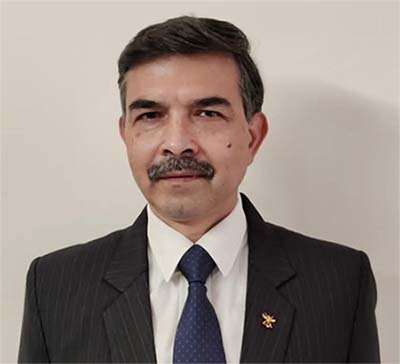Chairman Chiefs of Staff Committee: A Midway Solution
The Naresh Chandra Task Force was convened last year to deliberate on issues concerning national security. Its report has been submitted to the government and presentation on the key recommendations made to the National Security Council (NSC). The Indian media have reported its key recommendations. If these reports are to be believed, the Task Force has recommended the appointment of a permanent Chairman of the Chiefs of Staff Committee (COSC). The exact details regarding the appointment will only be known once the report is declassified.
Most major democracies follow one of two models for their Higher Defence Management. The United States follows the ‘Joint Chiefs of Staff Committee’ model, while the United Kingdom, France, Canada and Australia follow the ‘Chief of Defence Staff (CDS)’ model. Here, it is important to note the salient aspects of these two models. They evolved post World War II when it became abundantly clear that joint operations involving all the services will be essential for synergizing the war effort. The need was also felt for a single point military advice to the government, rather than each service taking up its respective view point with the government individually without reference to the other services. The systems which have evolved do not in any way curtail the right of the individual service, through their respective service chiefs, to approach the Chief Executive of the country on matters of importance to them.
The US Department of Defense has a Joint Chiefs of Staff headed by a permanent Chairman. It also has Chiefs of the Army, Navy, and Air Force, besides others. The Chairman of the Joint Chiefs of Staff is the principal military adviser to the President, NSC and the Secretary of Defense. He undertakes his functions, which is primarily advisory in nature, in consultation with the members of the Joint Chiefs of Staff and the commanders of the unified and specified combatant commands. The Joint Chiefs of Staff has no operational role, which is the responsibility of combatant commands.
The ‘CDS’ model, on the other hand, is a system wherein the Chief of Defence Staff has both operational and advisory roles. The CDS is normally the senior most officer and the commander of the armed forces. This model is also a result of an evolutionary process wherein the system has evolved from the Chiefs of Staff Committee system followed until the 1950s and 1960s.
The two models have their pros and cons and have served their purpose of providing single point military advice as also enhancing jointness among the services. Any country initiating structural reforms of its higher defence organisation (HDO) has to undertake a holistic review of its needs, resources and objectives. A structure suitable to its political and security system has to be considered and then the various appointments that go into the making of the system have to be thought of.
The sense one gets from Indian media reports is that the approach recommended by the Naresh Chandra Task Force is to create an organisation around an appointment rather than create an organisation and then consider appointments best suited for the system. But the fact remains that appointments are not as important, it is the structure of the system that should take precedence over appointments. Media reports do not speak of any reforms being recommended by the Naresh Chandra Task Force to the HDO of the country. The reports in fact indicate that the appointment is being created ‘without affecting the autonomy of the chiefs’, that is to say there are no structural reforms of consequence being recommended.
A large number of strategic analysts have commented in the past that ‘the institution of the COSC has neither contributed to integrated operations nor succeeded in resolving inter service professional differences’. Other things remaining constant, the appointment of a permanent Chairman Chiefs of Staff Committee perhaps may not be able to make any significant value addition to the functioning of the HDO of the country, except that the Chairman will not ‘wear two hats’ and can devote all his energies to the task at hand.
In the HDO structure that will evolve if this recommendation were to be implemented, HQ Integrated Defence Staff, the Strategic Forces Command and the Andaman and Nicobar Command will be commanded by the Chairman COSC. This will be in addition to his advisory role. This seems like a ‘midway’ solution to the Joint Chiefs of Staff model of the US and the CDS model being followed in other countries. The Chairman COSC will neither be the Commander of India’s Armed Forces nor will he be able to do justice to his advisory role. The advisory role will be greatly constrained because of the factors that affect the functioning of the Chairman (albeit one in rotation) in the present system.
A question that needs to be asked of the proponents of the evolutionary model is whether a period of over a decade, since the recommendation for creating a CDS was made by the Kargil Review Committee Report, is not enough for evolving a structure suitable for our way of functioning? Perhaps, the reasons for not recommending a major reorganisation of India’s HDO will be known only when the complete report is placed in the open domain.




